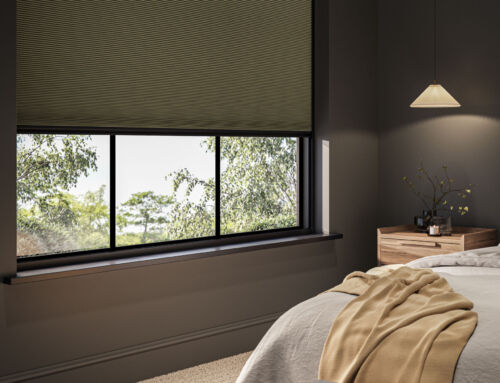Electric blinds are quickly becoming a must-have feature in modern homes, offering convenience, style, and efficiency. Whether you’re looking for improved home automation, enhanced privacy, or a sleek aesthetic, electric blinds offer a compelling alternative to traditional window coverings. In this blog post, we’ll explore everything you need to know about electric blinds, including their benefits, potential drawbacks, and how they compare to manual blinds.
What Are Electric Blinds?
Electric blinds, also known as motorised blinds, are window coverings that can be operated using a remote control, wall switch, smartphone app, or even voice commands through a smart home system. Unlike traditional blinds that require manual adjustment, electric blinds can be controlled with the push of a button, making them a convenient and stylish option for any home or commercial space.
The Benefits of Electric Blinds
1. Convenience and Ease of Use
One of the primary reasons homeowners opt for electric blinds is convenience. With remote control operation, you no longer have to manually adjust your blinds throughout the day. This is particularly beneficial for hard-to-reach windows, large window installations, or homes with multiple blinds.
2. Smart Home Integration
Electric blinds can be integrated into smart home systems such as Amazon Alexa, Google Home, and Apple HomeKit. This allows you to automate your blinds to open and close at set times or control them via voice commands, adding an extra layer of comfort and efficiency to your home.
3. Improved Energy Efficiency
By programming your blinds to open and close based on the time of day or temperature, you can significantly reduce heat loss in the winter and minimise heat gain in the summer. This helps maintain a comfortable indoor temperature and lowers energy bills by reducing reliance on heating and cooling systems.
4. Enhanced Security and Privacy
Motorised blinds can be scheduled to open and close even when you’re not at home, creating the illusion that the property is occupied. This added layer of security can help deter potential intruders. Additionally, electric blinds provide instant privacy without the need for manual adjustments.
5. Child and Pet Safety
Traditional blinds often come with cords, which pose a strangulation hazard to young children and pets. Electric blinds eliminate the need for cords, making them a much safer option for family homes.
6. A Sleek, Modern Aesthetic
Electric blinds provide a clean and contemporary look, with no dangling cords or manual mechanisms. They are available in a wide range of materials, colours, and styles to complement any interior decor.
Potential Drawbacks of Electric Blinds
1. Higher Initial Cost
Compared to traditional blinds, electric blinds can be more expensive due to the cost of motorisation and smart home integration features. However, many homeowners see this as a worthwhile investment for the convenience and benefits they provide.
2. Power Source Considerations
Electric blinds require a power source to function. Some models are battery-operated, while others need to be hardwired into your electrical system. Battery-powered options may need recharging or battery replacements over time, whereas hardwired blinds may require professional installation.
3. Potential for Malfunctions
Like any electronic device, electric blinds can experience malfunctions over time. Issues such as motor failure, connectivity problems with smart home systems, or battery depletion may require maintenance or repairs.
4. Compatibility Issues
Not all electric blinds are compatible with every smart home system. If you have an existing home automation setup, it’s important to choose blinds that work with your preferred platform.
Types of Electric Blinds
1. Roller Electric Blinds
Roller blinds are a popular choice for electric operation due to their sleek design and ease of use. They provide excellent light control and can be fitted with blackout fabrics for maximum privacy.
2. Venetian Electric Blinds
Venetian blinds with motorised controls allow you to tilt the slats for adjustable light and privacy levels. They are available in materials such as aluminium, wood, or faux wood.
3. Roman Electric Blinds
Roman blinds offer a soft, elegant look and can be motorised for effortless operation. They work well in living rooms and bedrooms where a sophisticated aesthetic is desired.
4. Pleated and Cellular Electric Blinds
These blinds provide excellent insulation and are ideal for energy-efficient homes. Their unique honeycomb structure traps air, helping to regulate indoor temperatures.
How to Choose the Right Electric Blinds
1. Consider Your Needs
Think about why you want electric blinds. Are you looking for convenience, energy efficiency, or enhanced security? Understanding your primary needs will help narrow down your options.
2. Check Smart Home Compatibility
If you use a smart home system, make sure the blinds you choose are compatible. Some blinds come with their own apps, while others integrate seamlessly with existing automation platforms.
3. Decide on Power Source
Choose between battery-operated, plug-in, or hardwired electric blinds based on your preferences and installation possibilities.
4. Select the Right Material and Style
Consider the room where the blinds will be installed and choose materials and colours that complement your decor.
5. Factor in Budget
While electric blinds can be more expensive than manual ones, there are options available at different price points. Determine how much you’re willing to invest for the added convenience.
Installation and Maintenance
Installation Options
- DIY Installation: Some battery-operated models are easy to install without professional help.
- Professional Installation: Hardwired blinds typically require an electrician to connect them to your home’s power supply.
Maintenance Tips
- Keep the Blinds Clean: Regularly dust and wipe down the blinds to prevent dust build-up.
- Check the Motor: Periodically test the motor function to ensure smooth operation.
- Replace Batteries When Needed: If using battery-operated blinds, recharge or replace batteries as required.
- Update Smart Home Software: If your blinds are connected to a home automation system, ensure firmware updates are installed for optimal performance.
Are Electric Blinds Worth It?
For many homeowners, the convenience, energy savings, and aesthetic appeal of electric blinds make them a worthwhile investment. If you value smart home automation and are looking for a modern, hassle-free way to control light and privacy in your home, electric blinds are a fantastic choice.
Final Thoughts
Electric blinds offer a stylish and functional upgrade to traditional window coverings. While they come at a higher initial cost, the benefits of convenience, energy efficiency, and enhanced security make them a popular choice for modern homes. By selecting the right type, ensuring smart home compatibility, and choosing the ideal power source, you can enjoy all the advantages electric blinds have to offer.
Ready to upgrade your home with electric blinds? Explore the latest styles and features to find the perfect fit for your space!






Leave A Comment